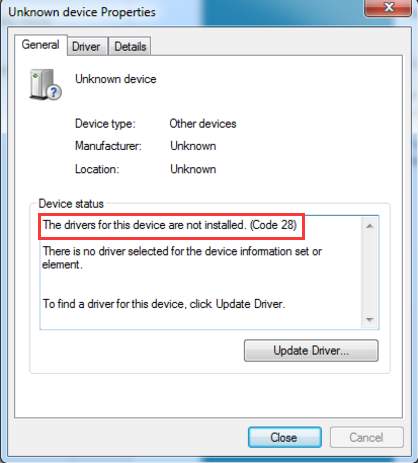Use the links on this page to download the latest version of Bluetooth Peripheral Device drivers. All drivers available for download have been scanned by antivirus program. I've got a wired aluminum Mac board (small variant, no 10 key), and I've tried to install drivers from various sources. I found 'AppleKeyboardInstaller.exe' online, and attempted to install. It got my FN key working for arrow keys and delete.
-->There are two installation types for Bluetooth profile drivers
Bluetooth peripheral device driver for windows 7 free download - nVidia Graphics Driver (Windows Vista 32-bit / Windows 7 32-bit / Windows 8 32-bit), nVidia Graphics Driver (Windows Vista 64-bit. The Best Free Drivers app downloads for Mac: Paragon NTFS for Mac USB Audio ASIO driver TI-83 Plus OS ExactScan Digidesign CoreAudio Driver BetterTouc. Driverlookup.com is designed to help you find drivers quickly and easily. We have the best Driver Updater software Driver Easy which can offer whatever drivers you. 4) Right-click one of the devices and click Update Driver Software. 5) Click Browse my computer for driver software. 6) Click Let me pick from a list of device drivers on my computer. 7) If you are asked to select from a list, please select Bluetooth Radios. Attention to Cam. Ran into same issue with windows 10 Ver 1511 running on mac mini late 2012 with the new boot camp 6. I found that if i went to the windows control panel under Bluetooth then unpaired / repaired and reconnected that the magic mouse and keyboard would work consistently.
Client-side installation
Server-side installation

Client-side installations are for remote devices where the remote device advertises its services and the computer connects to it. Examples include: mouse devices, keyboards, and printers.
Server-side installations are where the computer advertises services and remote devices can connect to the computer to use those services. For example, a vendor could author a server-side installation to enable a PDA to print to a printer attached to the computer.
These two installation types require different installation procedures.
Installing a Client-side Profile Driver
When a user wants to use a Bluetooth-enabled device, the user should bring the device within range of the computer and initiate a connection from the computer to the remote device. The following is the installation sequence for a client-side profile driver installation.
To Install a Client-side Profile Driver
Launch Bluetooth Devices in Control Panel to find all devices within range of the computer.
Select the device to pair with.
Pair (or bond) the device with the local radio. This may or may not involve a PIN exchange.
The local radio issues an SDP inquiry to identify the services supported on the remote device.
The Found New Hardware Wizard searches for appropriate drivers on the local hard disk drive, and/or on Windows Update.
If the Found New Hardware Wizard does not find an appropriate driver for the device, it prompts the user to insert the profile driver installation media that contains the profile driver's device setup information file (INF file).
Installing a Server-side Profile Driver
The Bluetooth driver stack supports service GUIDs as defined by the Bluetooth SIG, as well as custom GUIDs (that is, GUIDs that are not defined by the Bluetooth SIG).
Note You can use the Guidgen.exe tool that is provided with the Microsoft Windows SDK to create custom GUIDs.

To expose computer functionality that remote Bluetooth devices can use, you must write a user-mode installation application.
The installation application must communicate with the Bluetooth driver stack to create a service GUID for the functionality to expose. Vendors specify the service GUID in the application and in their device installation INF file.
The installation application must call the user-mode API BluetoothSetLocalServiceInfo. However, before the application can call this API, the application must have the SE_LOAD_DRIVER_NAME security privilege. The following code example demonstrates how to obtain this privilege. Note, the example does not demonstrate error handling.
Profile Driver INF file
A profile driver's INF file contains information about a Bluetooth device for client-side installation. For a server-side installation, the INF file specifies a device ID that corresponds to the service GUID created by the installation application. All Bluetooth devices are members of the Bluetooth class. The Bluetooth class installer ( Bthci.dll) assists in installing profile drivers.

For more information about creating and distributing INF files and installing drivers, see Creating an INF File and INF File Sections and Directives.
Plug and Play IDs
The Bluetooth driver stack generates hardware IDs according to the following templates:
BTHENUM{ ServiceGUID}_VID& nnnnnnnn
BTHENUM{ ServiceGUID}_VID& nnnnnnnn_PID& nnnn
BTHENUM{ ServiceGUID}_LOCALMFG& nnnn
The Bluetooth driver stack generates compatible IDs according to the following template:
- BTHENUM{ ServiceGUID}
ServiceGUID is a 16-bit GUID expanded into a 128-bit GUID, as defined by the Bluetooth specification. For example, {00001124-0000-1000-8000-00805F9B34FB} corresponds to an HID device.
The 8 digits following VID& correspond to the vendor ID code.
The 4 digits following PID& correspond to the product ID code.
The 4 digits following LOCALMFG& correspond to the manufacturer of the local Bluetooth radio.
The VID/PID and LOCALMFG tags are independent of each other.
The most generic device ID is a ServiceGUID by itself. For example:
BTHENUM{00001124-0000-1000-8000-00805F9B34FB}
You can restrict the Bluetooth driver stack to load your profile driver and software to run only on a specific release of a remote device by using Plug and Play IDs in both the remote device and the INF file. Note that the Bluetooth driver stack generates a VID/PID pair only if the device publishes a Plug and Play ID that the stack can detect using SDP. For example:
BTHENUM{00001124-0000-1000-8000-00805F9B34FB}_VID& nnnnnnnn_PID& nnnn
You can restrict the Bluetooth driver stack to load profile driver and software to run only on a specific local Bluetooth radio by specifying the LOCALMFG tag in the device ID in your INF file. For example:
Epson Drivers For Mac
BTHENUM{00001124-0000-1000-8000-00805F9B34FB}_LOCALMFG& nnnn